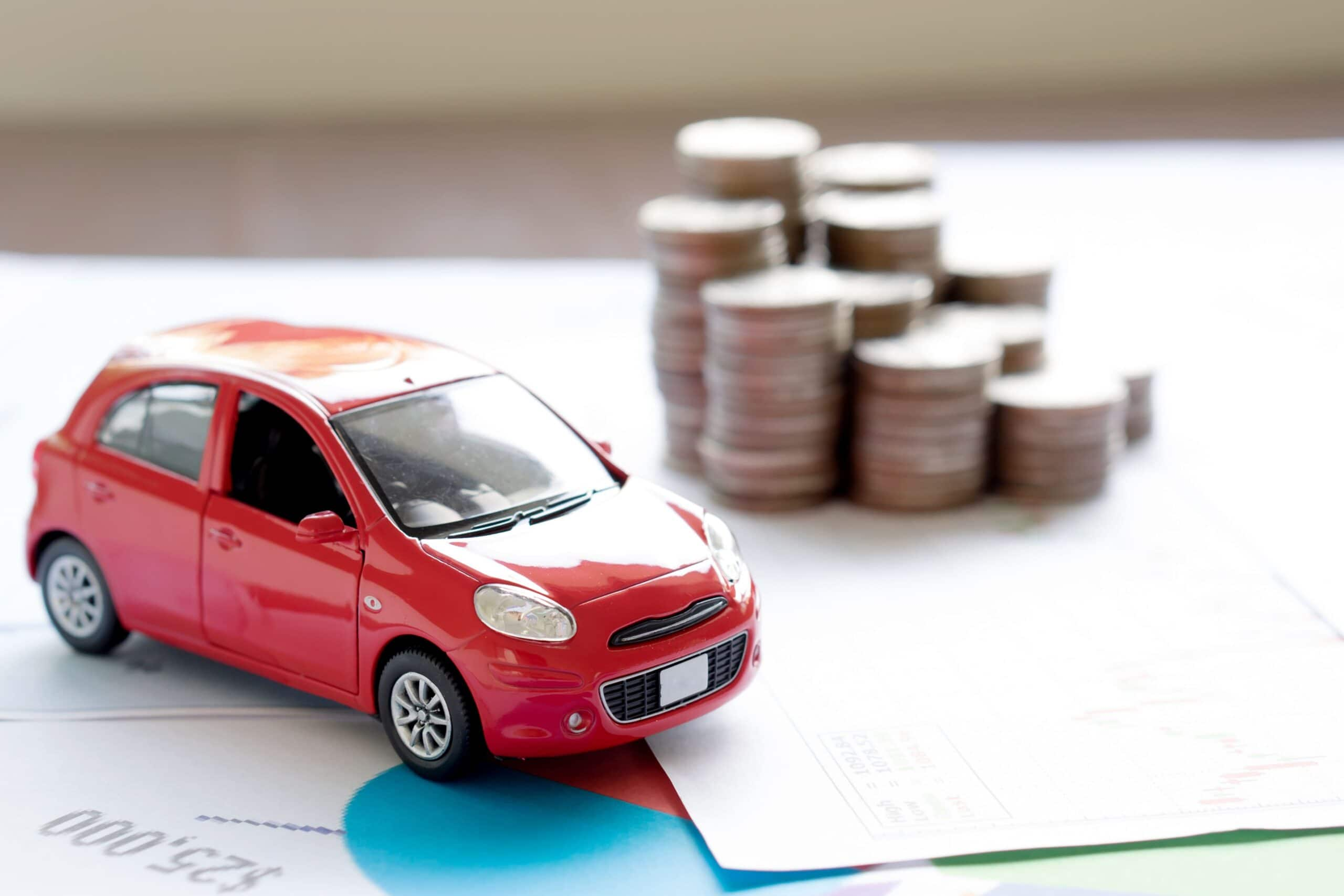Factors that can affect the cost of family car insurance
Buying a new home, changing your living arrangements, marrying, divorcing and adding a teen or new driver to your policy can affect the cost of your family's car insurance.
John Espenschied, owner of Insurance Brokers Group, says your credit score is one of the biggest factors that determine your family car insurance cost. The lower your score, the more you’ll pay.
The main factors that affect car insurance cost for families are:
- The year, make and model of vehicles
- Tickets or accidents
- What state you reside
- Age of drivers
- Gender
- A student driver’s grades
- Whether a family has multiple policies with the same company
TIP"There are so many variables when it comes to car insurance, especially with multiple drivers in the household," said John Espenschied, owner of the Insurance Brokers Group, "I would estimate the average family is paying $300 to $500 for car insurance per month, assuming this includes young drivers and multiple vehicles.
Now, let's explore some ways to get savings so you can find the cheapest car insurance for your family.
How much is car insurance for families?
The price of car insurance varies widely from company to company. The average cost of a car insurance policy in 2023 was $1,895 per year. But rates can swing wildly depending on many factors.
Each year, Insurance.com runs the numbers for car insurance rates by state for roughly 3,000 different vehicle models, resulting in a list of the cheapest to insure and the most expensive to insure.
What are the most expensive cars to insure as a family?
Not surprisingly, the most expensive cars are usually the most costly to insure. These cars are often high-powered and sporty. They aren't always the safest, and also cost more to repair.
Car insurance companies may consider these vehicles a risk, so you're going to pay for it. That said, the Maserati Quattroporte is probably not the best option for the happy, money-conscious family, and certainly shouldn't be the one that your teen is assigned to should you have one (the teen or the car).
Your teenagers are expensive. They eat a lot, most of them are on a traveling sports or dance team, and they always want the coolest sneakers. They'll affect your insurance rate in a big way, too. Finding the cheapest car insurance if you have a teen on your policy is challenging.
Adding a teen driver can increase the family’s auto plans by up to 161%. The average car insurance cost for teen drivers on their parent’s policy is $3,726 annually.
“It's generally less expensive for parents to add teenagers to their auto insurance policy than it is for teens to purchase one on their own,” says Loretta Worters, vice president of media relations at the Insurance Information Institute. “Rates can increase anywhere from 45% to 60%. By insuring your teenager’s car with your insurer, you may qualify for a multi-vehicle discount, which can offset that amount slightly. That said, insurance companies differ in how they price policies for young drivers, so do some research into prices to be sure to find the best fit for you and your teen.”
How to get the cheapest car insurance for families
Shopping around, bundling policies, choosing a cheaper vehicle to insure and discounts are among the easiest ways to reduce your family’s car insurance cost.
And the good news is several car insurances offer discounts that should interest families. It's important that you ask your agent or insurance company about these.
Shop around for rates - You can find cheap or cheaper car insurance rates by taking the time to compare companies and ask about discounts.
You may also want to look into a low-income car insurance program for families if you’re struggling to pay premiums now. Experts suggest checking auto quotes each year when your policy comes up for renewal. However, you definitely should also take a look at the rates if any of these circumstances arise:
- Purchasing a new or different car
- Combining cars on a multi-car insurance policy
- Adding or removing a driver
- Marriage
- Divorce
- Moving
- Adding a teen driver
- Home purchase
- DUI or major violation (more on DUI insurance)
- Accident
- Change in credit score
For more information, see "16 reasons your car insurance rates drop."
Choose a vehicle that’s cheap to insure - Remember that the vehicles you choose factor heavily in the amount you'll pay for insurance.
Bundle policies when you can - Homeowners and married people tend to file fewer claims, and that translates into lower rates on car insurance for those two groups. That's an advantage for families in getting a cheaper rate. Putting your homeowners' or renters' insurance with the same company as your car insurance (often called “bundling”) almost always gets you a better price. In some cases, you can save more than 25% on your liability, collision, and comprehensive coverages.
Increase your deductible - Another way to save is to increase your deductibleThe deductible is the amount you pay out of pocket for a covered loss when you file a claim. from $250 to $500. That can lower the collision or comprehensive portion of your premiumThe payment required for an insurance policy to remain in force. Auto insurance premiums are quoted for either 6-month or annual policy periods..
A higher deductible will mean more money out of your pocket if you need to make a claimAn insurance claim is a request you make to your insurance company for coverage after your car is damaged or you have an accident. You can file a claim online, by phone, or in writing., and that savings on the front end can become expensive should you cause an accident. (See "How much can I save by raising deductibles?").
Multi-car discount - Families with a multi-car insurance plan typically save anywhere from 10% to 25% on their premiums compared to separate policies. You can also stack a home and auto insurance bundle discount on top of a multi-car discount, saving around 15% more on average.
Good student discount - If you've got a student in your family with good grades, you'll likely get a decent discount on your insurance. Most car insurance companies offer a good student discount, both for high school students and college students. A "good student" generally translates into maintaining a "B" (3.0) or better average to qualify for this discount and typically applies to students under 25.
Loyalty discounts - Even sticking with your company can help you save money. Nationwide, Farmers, Geico, USAA, and Allstate are among those who have handed out loyalty discounts. It'll usually get you about a 10% discount.
Good driver and safe driver discounts - Good driver and safe driver discounts can get you between 5% and 25% in savings, depending on your carrierAn insurance carrier is the company that provides your car insurance policy and pays claims.. Speeding tickets, accidents, drunk driving citations -- all can drive your insurance rates higher. Insurers will check your record to see if you present a risk.
To get the cheapest rates, an insurance company usually requires that you have a clean driving record for at least three years; that means no DUIs, no moving violations, and no at-fault collisions.
Paid-in-full discount - Grab another small discount by paying the annual car insurance bill in full, if you can. That can get you about a 10% savings.
Understand all the car insurance discounts for which you may qualify, so that you can take advantage of some reductions in your bill that can add up.
Frequently asked questions: Car insurance for families
How do family auto insurance plans work?
Family car insurance, also known as multi-car insurance, is where you bundle anywhere from two to five vehicles together into one package. Usually, the only rule is that all the vehicles must be at the same address.
Generally, family car insurance costs less than what you’d pay if you bought separate plans for each vehicle. You also get the added benefit of having one deductible and renewal date, which can save you even more money. So, if you’re looking for the best car insurance for families, a multi-car insurance plan is a good place to start.
Do car insurance rates go down when you have a baby?
Sometimes. Car insurance companies typically see parents as safer drivers. And because safer drivers carry less risk and will likely get into fewer accidents, your car insurance company could lower your insurance premium as a result.
Does car insurance get cheaper after you buy a home?
Generally, yes. Your car insurance can get cheaper after buying a home. Car insurance companies see homeowners as more stable than renters and will often discount your rate even if you don’t have home insurance with them. This rate is small and usually averages out to about 1.5%.





